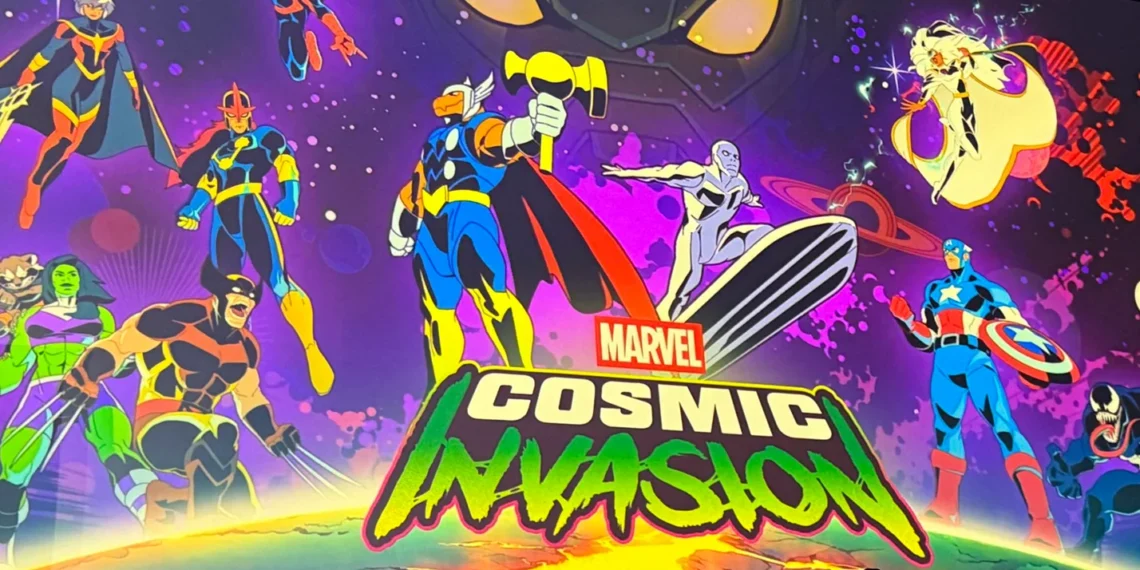The phrase Marvel cosmic invasion stirs images of interstellar battles, ancient rivalries, and universe-shaking events. This isn’t just one story—it’s a grand saga that has unfolded across comics, films, and now games, pulling together heroes and villains from every corner of the Marvel Universe. To understand it fully, we need to look back at the seeds of the conflict, trace its biggest battles, and see how each chapter connects to the next.
Prelude to a Universal War
Every cosmic invasion in Marvel has deep roots. The groundwork for these massive battles was laid decades ago, both in print and on screen. In comics, storylines about alien empires, cosmic gods, and reality-altering threats have been building since the early days of Fantastic Four and Avengers. The Kree, Skrulls, Shi’ar, and countless other alien civilizations have appeared, often with competing interests that eventually explode into war.
The MCU also planted its seeds early. Films like Guardians of the Galaxy, Captain Marvel, and Eternals hinted at bigger forces at play. The appearance of Thanos, wielding the Infinity Gauntlet, showed that Earth’s heroes were only a small part of a much larger, more dangerous universe. These threads laid the emotional and strategic groundwork for what fans now call the Marvel cosmic invasion era.
The Annihilation Event: First Major Wave
In 2006, Marvel launched Annihilation, a cosmic crossover that would redefine its outer-space storytelling. The Annihilation Wave, led by the insectoid overlord Annihilus, poured out of the Negative Zone, devastating worlds and toppling civilizations. Nova, Silver Surfer, Drax the Destroyer, and other cosmic champions stood against this seemingly unstoppable force.
This was more than just another war—it was the first true moment where Marvel’s cosmic setting felt as alive, dangerous, and complex as Earth’s own superhero community. The Marvel cosmic invasion concept began here in earnest, blending political intrigue, desperate alliances, and large-scale destruction into one epic storyline.
Rising Tensions Across the Galaxy
The years that followed were filled with escalating conflicts. Events like Annihilation: Conquest, War of Kings, and Realm of Kings expanded the reach of Marvel’s cosmic tales. The Kree and Skrull empires clashed repeatedly, while the Inhumans and Shi’ar found themselves dragged into conflicts not of their own making.
Each new event layered more history, grudges, and alliances into the cosmic backdrop. Heroes were no longer just defending Earth—they were protecting fragile interstellar peace, often at great personal cost. These storylines gave the Marvel cosmic invasion theme depth and emotional weight, turning it into more than just explosions in space.
Empyre: A Shift in the Balance
In 2020, Marvel released Empyre, a story that upended one of the oldest rivalries in its universe. The Kree and Skrull—longtime enemies—formed an alliance under Emperor Hulkling to face a new threat: the Cotati, a plant-based race with ambitions of galactic conquest.
Empyre was a reminder that in the Marvel cosmos, allegiances are never fixed. Today’s ally can become tomorrow’s enemy, and a threat from the past can return when least expected. The Marvel cosmic invasion here wasn’t about sheer numbers—it was about strategy, betrayal, and the frightening reality that war can sprout from peace at any moment.
Reckoning War: An All-Fronts Battle
More recently, Reckoning War became the ultimate test of the Marvel Universe’s cosmic defense. This was a conflict unlike any before—one that spanned every corner of the galaxy at the same time. The Prosilicans, ancient enemies of the Watchers, returned with devastating technology. Earth was attacked by the Badoon, the Shi’ar by the Morani, and Kree-Skrull territories by a resurgence of the Annihilation Wave.
Reed Richards (Mr. Fantastic) rallied Earth’s heroes, while cosmic champions like Silver Surfer and Nova battled across the stars. The Watcher Uatu faced his own moral crisis, breaking his oath to interfere in order to save existence itself. This was Marvel cosmic invasion at its most intense—a sprawling, interconnected war testing not just strength, but morality and unity.
From Page to Play: The Marvel Cosmic Invasion Game
In 2025, the term Marvel cosmic invasion took on a new life with the release of a beat-’em-up video game inspired by these legendary events. The game follows the Annihilation storyline, with players controlling heroes like Nova, Captain America, Spider-Man, She-Hulk, Venom, Wolverine, Storm, and many others.
Levels shift from New York’s streets to deep-space outposts, and the roster brings together street-level fighters and cosmic powerhouses alike. While fictional, the game captures the energy and scope that makes the cosmic invasion theme so enduring. It’s proof that this storyline resonates across formats, from comics to consoles.

Why the Cosmic Invasion Matters
What makes Marvel cosmic invasion stories so compelling isn’t just the scale of destruction or the spectacle of space battles—it’s the way they explore identity, sacrifice, and leadership. In these wars, characters are forced to make impossible choices:
- Do they protect their homeworld or join a larger cause?
- Do they trust an old enemy if it means survival?
- How much of themselves are they willing to lose to win?
These questions make the cosmic sagas feel personal despite their massive scope. Readers and viewers connect with the emotional beats, even when the battlefield is light-years away.
The Timeline in Perspective
When you map out the Marvel cosmic invasion timeline, it becomes clear how each event builds upon the last:
- Early Hints – Seeds planted in early comics and MCU films.
- Annihilation – The first large-scale war uniting unlikely heroes.
- Conquest & Kings – Follow-up events deepening rivalries and alliances.
- Empyre – Political shifts rewriting the rules of the galaxy.
- Reckoning War – All-out conflict testing every hero and civilization.
- Game Adaptation – A modern reimagining bringing the story to new audiences.
The Road Ahead
With Marvel’s storytelling evolving, the cosmic invasion concept is far from over. Future MCU phases could easily adapt parts of Annihilation, Empyre, or Reckoning War. Characters like Nova, Silver Surfer, and Beta Ray Bill are still waiting for their full cinematic debut, and they could be the keys to unlocking the next big interstellar conflict.
The appeal is timeless—galactic threats push heroes to their limits, forge unexpected alliances, and challenge the idea that any single hero can save the day alone.
Conclusion
The Marvel cosmic invasion isn’t one moment in time—it’s a living narrative thread running through decades of storytelling. From the shock of the first Annihilation Wave to the moral dilemmas of Reckoning War, it’s a saga that blends high-stakes action with deeply human drama.
It’s about the vastness of the Marvel Universe, but also about the courage of individuals who stand against impossible odds. And whether you first encountered it in the pages of a comic, on a movie screen, or in a video game, one thing remains true: the cosmic invasion will always be more than a battle—it’s a reminder that even in the cold expanse of space, hope and heroism can burn brighter than any star.
Also read :Why Axis Football Stands Out in the Sports Gaming World















